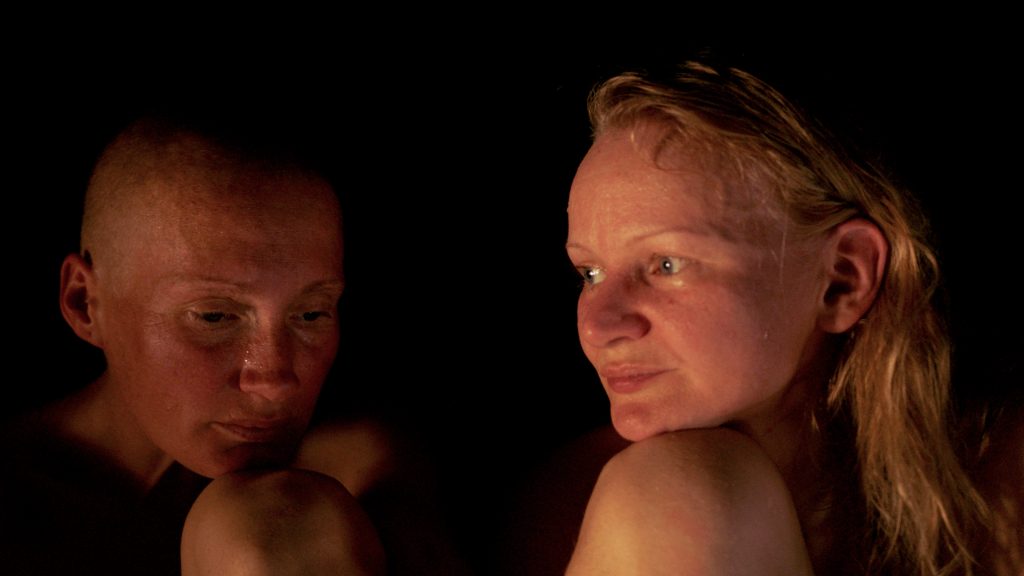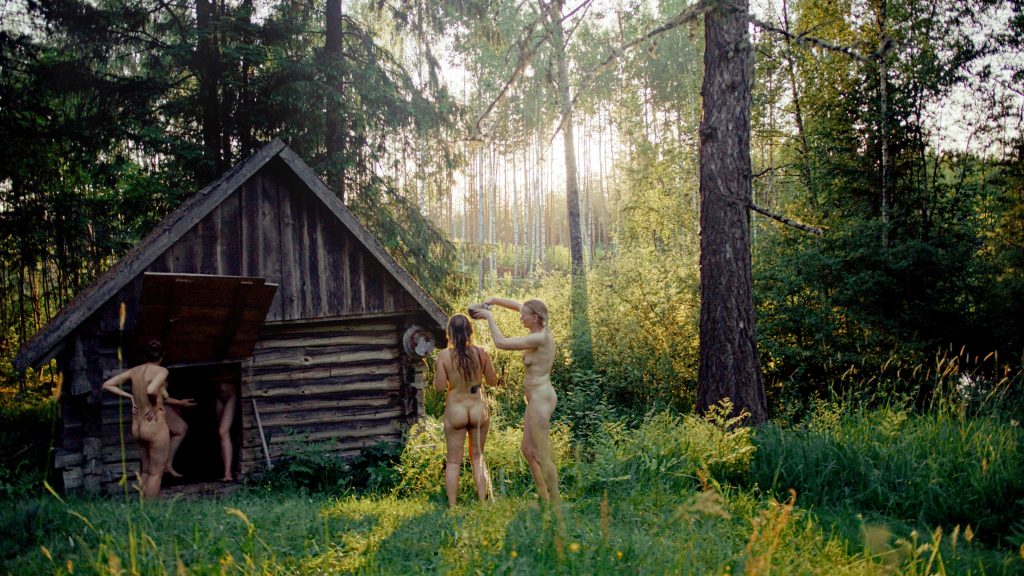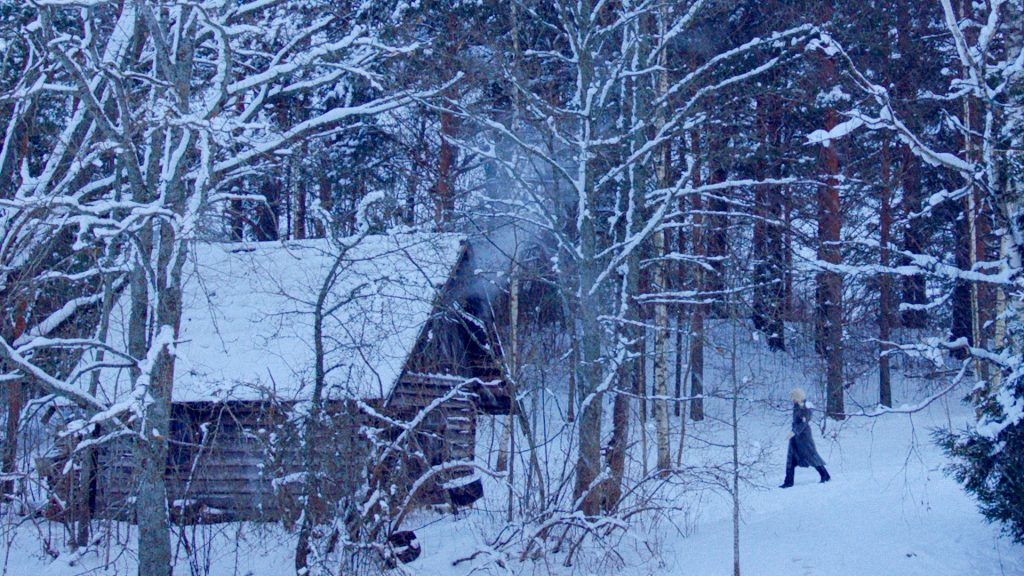The Indiependent speaks to Anna Hints about their directorial debut documentary Smoke Sauna Sisterhood, the personal and cultural significance of the smoke sauna tradition, how best to capture vulnerability, and the importance of human connection.
Smoke Sauna Sisterhood invites audiences into the long-standing tradition of smoke saunas in Estonia. Hints’ intimate and visceral portrayal transports us to the “cosmic womb” of the smoke sauna as we hear from women sharing their personal, and often painful, experiences with each other.
The Indiependent: Firstly, what was your motivation for making this documentary?
Anna Hints: There were many motivations actually. First of all, for me, this is something I grew up with. It dates back to when I was 11 and my grandfather had died. Me, my granny, my aunt and my niece went to the smoke sauna, because that’s what you do before big things like a funeral. It was there that my granny confessed that my grandfather had actually betrayed her and lived with another woman for some time. She released all these emotions connected to that—pain, anger, disappointment. One smoke sauna session lasts several hours. When we left, I felt that Granny had made peace with Grandfather, so the next day she could bury him in peace.
The sauna is a safe space where absolutely all of your emotions and experiences, including the painful and shameful, can be shared without judgement. When there is this sisterhood and community around you and your voice can be heard, there is a huge sense of empowerment and healing. I wanted to transfer that experience and that space into the dark cinema hall, where everyone can experience that sisterhood, regardless of gender, and feel the courage to be vulnerable.
The film is an intimate portrayal of what is such a sacred space. To be present in the sauna, especially with a camera, there must have been a lot of trust between you and the women featured in the film. How did you build that trust?
Trust is one of the most important assets we have as directors, and as people in general. Film schools teach that you can persuade and manipulate people—I disagree with all that. I felt that it was very important that I was transparent and showed what kind of level of honesty and intimacy I was looking for. Only when a person says ‘yes, I want to be there’, without hesitation, did we go ahead.
As a director, you have to find people who trust and believe in you and your way of filmmaking. We had agreed that in post-production the women will have the right to say ‘no’ to being included—this is a very vulnerable position for a production. But in my experience, when you build trust from the start and you don’t try to persuade, these ‘no’s do not come.
The way we filmed the bodies mattered too. I tried out this way to shoot bodies by filming myself and then showing the footage to the women so they had trust with our cinematographer, me, and the production. The nakedness is not sexualized—there is no male gaze. The objectification of women and bodies is all around us, and I feel that we need this different viewpoint. When you’re in the smoke sauna, everybody is beautiful, everybody has the right to their body and their voice.
When the film came out in Estonia, some of the women who did not choose to show their face in the film were posting images online saying, “this is my back!” So it has been a transformational and, I think, healing process for all of us. I firmly believe that it is possible to create bold, intimate things without manipulation.

Did you have existing relationships with the women featured in the film, or did you only meet them when filming began?
It started with friends in the smoke sauna, our sisterhood. But over the seven years that I was making the film, the scale grew and grew. Women I didn’t know started to approach me because they knew what I was doing. You don’t see them all, but the film features 25 women. In the material there are many more.
Once a car came onto the farm where we were filming and a woman got out and said, “I heard there is this film, I want to be a part of it”. I didn’t know her at all, I didn’t know what story she had, but I said “okay, let’s get naked, let’s go!”
Were the conversations in the film completely organic or prompted?
We didn’t ever talk about what we were going to discuss in the sauna. We always entered, and then we would see what would come to the surface.
It was also important to me that we shot in the real temperature, because that’s how the smoke sauna works. In the darkness, with this tar smell, the temperature means you start to sweat it out, you know? Physically, but also emotionally, the dirt comes to the surface. Whether it was people I knew or people I didn’t, everyone became part of the sisterhood.
You’ve touched upon it there, the physicality of the heat and emotions coming to the surface, but is that what you think encourages the vulnerability and sharing? What is it about the sauna environment that you think provokes those kinds of conversations?
Definitely. The smoke sauna is dark, there’s no electricity. It has no chimney so it has this tar smell, and of course a high temperature. It is a special, separate house, often next to a body of water. The sessions, although you can go and come back, can sometimes take several hours. I have even had some four or six hour sessions. You heat the sauna for six hours before use, but then you cannot put in more wood. So it’s not limitless, like when you go to a regular sauna and are able to add more fuel whenever. You have to take time to heat up the smoke sauna and be in the present. So it is the physical things, but also the cultural things, that make the environment special.
The smoke sauna tradition is part of UNESCO world heritage. For us, in South-East Estonia, it is a sacred space. It’s culturally important and dates back to before the Christian colonisation of Estonia in the Middle Ages. It is a place where, for centuries, women used to give birth, and wash the dead, and heal. It has these spirits; for us, when you go to a smoke sauna, you can meet your ancestors. It’s this kind of cosmic womb, or portal between times. It’s not just a building for us, but part of the bigger spiritual context where time is cyclical, not linear. I think maybe all of this makes it special.

Lots of the discussions in the film are really personal to the women featured, but they also carry a lot of universality and I’m sure people from all different cultures and genders will relate to the discussions in the film. Was it important to you that lots of people will connect with the film in that way?
Of course I hope that they will. I’m a very intuitive filmmaker, following my gut and energy that I feel on the set. So while making it I was in the zone. Things happened and stories emerged and you could feel it, you know? I trust myself that when you feel that something magical is happening, something really vulnerable, it connects—even though it may be very local to South East Estonia.
I think it shows that despite our differences, we are all human. When we talk about being born into the female body, regardless of how you define yourself or your gender, there are imposed conditions that accompany that experience. Unfortunately, the reason so many people connect with that, is that this conditioning is so widespread. Our joys and our pains are shared across different parts of the world. It’s something beautiful, but also sad.
Yeah, it’s really bittersweet. Do you see these smoke sauna traditions in Estonia as something that might die out if they’re not protected? Is that a worry, or is it such an ingrained part of everyday life there?
As it was put under the protection of UNESCO, I think there is definitely that worry. One threat is forests where the smoke saunas are located being cut down. People are afraid that our local languages and customs will die out too.
I hope that the essence of the smoke sauna does not die, because it’s something that we really need in humanity. Thinking about our connections to each other, to ourselves, and to this planet, is the only way to continue. I hope that we wake up before it’s not too late, and learn from these kinds of practices that make us more connected and vulnerable. We have to look back on these practices to carry us forward.

Who do you hope to reach most with the film, and what do you want people to take away from it?
When I’ve been travelling with the film around the world, so many people from different genders and cultures have connected with it. I’m just so humbled from these responses that show the film has been transformational for so many people, or given them encouragement or empowerment. I think as a society, the more ready we are to hear each other out, to listen and to share, the stronger and healthier we are. Real strength is in the ability to be vulnerable.
People leaving the film feel this possibility of sisterhood, and possibility of being vulnerable with themselves and others. Maybe, when they leave the cinema, they meet someone who asks ‘how are you doing? How are you feeling?’ and they actually tell them how they’re feeling. They see somebody else being the first courageous one to share themselves—not just this pretty picture, this construction of ourselves that we often show on social media, but these beautiful moments of humanity, of vulnerability, of being imperfect. By hearing other voices, we can give ourselves a voice.
I love that your film shows that if you can give the time to be vulnerable and open those wounds, you will find peace at the end of that journey.
Exactly. We shouldn’t be afraid to share these uncomfortable experiences or feelings. There is a huge healing power from doing that, a feeling of liberation, and we feel the power come back to us. It’s a kind of radical self acceptance; accepting yourself and all these experiences, not hiding them, and being ashamed of them. As a society, we should not be afraid of these uncomfortable things. We should be ready to listen without judgement.
Words by Lena Moss
Smoke Sauna Sisterhood is released 13th October 2023.
Support The Indiependent
We’re trying to raise £200 a month to help cover our operational costs. This includes our ‘Writer of the Month’ awards, where we recognise the amazing work produced by our contributor team. If you’ve enjoyed reading our site, we’d really appreciate it if you could donate to The Indiependent. Whether you can give £1 or £10, you’d be making a huge difference to our small team.
